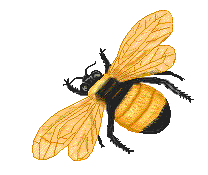
Are you interested in cooking historical food, just like your distant ancestors would have eaten---if they were lucky--or just like the Kings and Queens of history would have enjoyed? If the language of some of those old cookbook manuscripts scares you, you are not alone. On of the biggest reasons folks give for doing half-a-job of medieval food research is the language. After all, first you have to find reprints or microfiche of those original manuscripts, and then, when it's finally in your hands, you can't read it! The truth about historical cooking is that it is, in general, very similar to modern cooking. In fact, sometimes it is far superior! Through the process of Trial and Error, it is even possible to get what appears to be the most objectionable combination of ingredients to work well together. So if you find yourself gagging at the thought of Strawberries with Pepper, or Custard made with Marrow, or Chicken made with Prunes, perhaps what you really need is a recipe you can really sink your teeth into. I have tried to supply a few of those recipes here.
This recipe is, essentially, Rennaisance Applesauce. My children found it to
be so good that they requested seconds, thirds, and the leftovers in their
lunch boxes the next day. The original is from The Good Huswife's Jewel,
T Dawson, 1596, originally printed by Edward White.
Roste your apples, and when they be rosted, pill them and straind them
into a dish, and pare a dozen of apples and cut them into a chafer,
and put in a little white wine and a little butter, and let them boile
till they be as soft as Pap, and stirre them a little, and straine them
to some wardens rosted and pilled, and put in Suger, Synamon and Ginger,
and make Diamonds of Paste, and lay them in the Sunne, then scrape a
little Suger uppon them in the dish.
Reading this into modern English:
Bake three apples and three pears in the oven, in a pan covered with
foil, at 375 degrees, about 1 hour. A little water in the dish will speed
things up (not part of the original). Meanwhile, peel six apples, core
them, and thinly slice them. Put them in a large pot with 1/2 cup butter,
melted, and 1/2 cup of white wine. Cook over medium heat. Stir them
occaisionally, since the slices can break apart while cooking.
When very soft, remove from heat.
Bake a 1-crust recipe of pie dough, cut into diamonds, in the oven with the
aplles and pears, until just done. Sprinkle with sugar as they come out of
the oven. Allow to cool.
When the baked apples/pears are done, peel and core them, and mash them up.
Add them to the apple/butter/wine mixture, and combine well. Do not be
alarmed if this mixture browns somewhat. This is normal and to be expected.
To serve: Spoon the warm apple mixture into a serving dish. Garnish with the
pastry diamonds. Be sure each guest gets a piece of the pastry, as it
greatly enhances the texture of the apple moyse.

To Boile a Capon
Put the Capon into the poudre beef pot, and when you think it
almost tender, take a little potte and put there-in halfe
water and halfe wine, marie, currants, dates, whole mace,
vergice, pepper, & a little time.
{In essence, you are boiling or braising a chicken until nearly done
in a nice container that can go right to the table.
If you wish, use beef stock to braise in the bottom of
the pot (it is unclear in the original).Then pour
over about 1 cup wine and 1 cup water. Add a few
pieces of beef marrow from a marrow bone--parboiled or not,
according to your tastes, substituting butter or
lard if marrow makes you squeemish. Add approximately
a cup of zante currants, 3-4 dates, dices or sliced,
a blade or two of mace, "vergice" [sour grape juice,
substitute lemon juice if necessary), pepper, and about
1 tsp or more of fresh chopped thyme leaves. Continue braising
until the chicken tests done, and then serve hot}
To Boile a Capon with Orenges
Take Orenges or lemmons pilled, and cutte them the long way,
and if you can keepe your cloves whole and put them into your
best broth of Mutton or Capon with prunes or currants and
three or fowre dates, and when these have beene well sodden,
put whole pepper great mace, a good piece of sugar, some rose
water, and eyther while* or claret Wine, and let al these
seeth together a while, & so serve it upon soppes with your capon.
*This word appears just above the word while in the ms.
I believe it is meant to be "white" rather than "while".
{This recipe sounds delicious! What I would do is this:
Parboil a skinned chicken. When nearly done, drain, reserving 1
cup of the broth. Take 4 juice oranges and remove the outer
peel and membrane. Slice the fruit along the section lines,
and discard seeds. Into the chicken pot, put the pranges,
1 cup of the chicken stock, 5-6 whole cloves,
1 cup currants or cut up dates, pitted, 6 peppercorns, 1 blade of
mace, 1/4 cup sugar, 1/4 cup rose water, and perhaps 1/4-1/2 cup
white wine or claret (claret for choice). Allow to simmer to meld
the flavors, and when partially reduced, discard the whole spices.
Serve like this: On a large deep platter, put pieces of day-old
bread, dried and toasted quite crisp,and pour the chicken and sauce
over the entire platter. Serve immediately. If holding the dish,
keep the "sopps" until just ready to serve, and surround the dish
with them at the edge just before serving.}